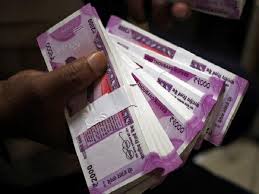 09-10-2019
09-10-2019
At Rs 1 lakh, India's bank deposit insurance lowest in world

 Insurance Alertss
Insurance AlertssAt Rs 1 lakh, India's bank deposit insurance lowest in world
MUMBAI: Protection of deposits in Indian banks through insurance is among the lowest in the world in India, at Rs 1 lakh per bank account (about $1,508), well below the level in developed economies and even other BRICS nations.
While the deposit insurance extended in India covers 70% of depositors in terms of number, only 7.8% of the deposit base comprises of deposits below Rs 1 lakh. What this means is that risk-averse people who choose bank deposits to park their life savings could lose a large chunk of their funds if there is a bank failure.
The issue of depositor protection, which last came to the fore when late finance minister Arun Jaitley introduced the Financial Resolution and Deposit Insurance (FRDI) Bill in 2017, has once again gained importance in the wake of the PMC Bank failure and reports of other private banks coming under RBI’s scanner.

According to a report by State Bank of India’s research department, while 75% of bank deposits were covered under insurance in fiscal year 1982, this dropped to 28% in 2018. The FRDI bill became controversial because of its suggestion that bank depositors be asked to share part of the cost of resolution of a failed bank and was consequently shelved.
“If we compare India with BRICS group of countries like Brazil and Russia, the comparative insurance figure rises to Rs 42 lakh & Rs 12 lakh respectively! If we compare the deposit insurance limit in India with countries having similar per capita income, we find that the insurance cover is even unlimited in some countries,” said Soumya Kanti Ghosh, chief economic adviser, State Bank of India. The coverage is very low even when the insurance amount is seen as a percentage of per capita income -- 0.7% for India compared with 3.7% in Australia, 4.4% in the US and 7.4% in Brazil.
In India, deposit insurance is provided by the Deposit Insurance and Credit Guarantee Corporation (DICGC), which collects a premium of 0.05% on the entire outstanding deposit. This means that a bank whose deposits are largely high value, ends up paying premium on even that portion of deposits that are not covered. However, a key difference between India and other markets is that no scheduled commercial bank has been allowed to fail since liberalisation, with RBI and government ensuring that failed banks are acquired. Bank failures have been restricted to the cooperative sector. According to the DICGC annual report it has paid Rs 4,822 crore in claims in respect of 351 co-operative banks since inception.
According to Vishwas Utagi, convener of the PMC Bank depositors’ association, all the funds of depositors should be protected. “Why should depositors not get 100% cover? Just like the government assures customers of Life Insurance Corporation, similar assurance is needed for bank deposits,” he said. Utagi added that public sector banks, which were meant to reach out to all Indians, will be shrinking after mergers. Given this backdrop, customers of cooperative banks should be protected.
Ghosh says the current upper limit of Rs 1 lakh per depositor has outlived its shelf life and there is a need to revisit it. “The DICGC coverage should be revised and bifurcated into two categories — desirable coverage of at least Rs 1 lakh for savings deposits (around 90% of the total accounts) and desirable coverage of at least Rs 2 lakh for fixed deposits covering 70% of total accounts.” The SBI report calls for a reintroduction of the FRDI Bill or suggests that there should be a resolution mechanism for non-banking finance companies that come under stress.
Source: The Times of India